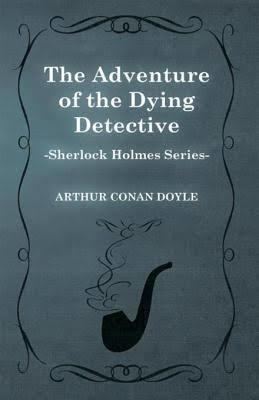8.2 /10 1 Votes8.2
Originally published 1913 Adaptations The Spider Woman (1944) | 4.1/5 Goodreads Publication date 1913 | |||||||||||||||||||||||||||||||||
 | ||||||||||||||||||||||||||||||||||
Similar Arthur Conan Doyle books, Classical Studies books | ||||||||||||||||||||||||||||||||||
The adventure of the dying detective sir arthur conan doyle audiobook short story
"The Adventure of the Dying Detective", in some editions simply titled "The Dying Detective", is one of the 56 Sherlock Holmes short stories written by British author Sir Arthur Conan Doyle. Together with seven other stories, it is collected as His Last Bow.
Contents
- The adventure of the dying detective sir arthur conan doyle audiobook short story
- Plot summary
- Commentary
- Adaptations
- References
Plot summary
Dr. Watson is called to tend Holmes, who is apparently dying of a rare disease contracted while he was on a case. Watson is shocked, not having heard about his friend’s illness. Mrs. Hudson says that Holmes has neither eaten nor drunk anything in three days.
Holmes instructs Watson not to come near him, because the illness is highly infectious. Although Watson wishes to examine Holmes himself or send for a specialist, Holmes demands that Watson wait several hours before seeking help. So, Watson is forced to wait, in extreme worry as Holmes mutters nonsense.
While Watson waits, he examines several objects in Holmes’s room. Holmes grows angry when Watson touches items explaining that he does not like his things touched.
At six o’clock, Holmes tells Watson to turn the gaslight on, but only half-full. He then instructs Watson to bring Mr Culverton Smith of 13 Lower Burke Street to see Holmes, but to make sure that Watson returns to Baker Street before Smith arrives.
Watson goes to Smith's address. Although Smith refuses to see anyone, Watson forces his way in. Once Watson explains his errand on behalf of Sherlock Holmes, Smith's attitude changes drastically. Smith agrees to come to Baker Street within a half hour. Watson excuses himself, saying that he has another appointment, and returns to Baker Street before Smith's arrival.
Believing that they are alone, Smith is frank with Holmes. It soon emerges, to the hiding Watson’s horror, that Holmes has been sickened by the same illness that killed Smith’s nephew Victor. Smith then sees the little ivory box, which he had sent to Holmes by post, and which contains a sharp spring infected with the illness. Smith pockets it, removing the evidence of his crime. He then resolves to stay there and watch Holmes die.
Holmes asks Smith to turn the gas up full, which Smith does. Smith then asks Holmes if he would like anything else, to which Holmes replies — no longer in the voice of a man near death — "a match and a cigarette." Inspector Morton then enters — the full gaslight was the signal to move in. Holmes tells Morton to arrest Culverton Smith for the murder of his nephew, and perhaps also for the attempted murder of Sherlock Holmes. Smith, still as arrogant as ever, points out that his word is as good as Holmes’s in court, but Holmes then calls for Watson to emerge from behind the screen, to present himself as another witness to the conversation.
Holmes was never really dying. His feigned illness was a ruse to induce Smith to confess to his nephew’s murder. Holmes was not infected by the little box; he has enough enemies to know that he must always examine his mail carefully before he opens it. Starving himself for three days and the claim of the "disease's" infectious nature was to keep Watson from examining him and discovering the ruse.
Commentary
The setting date may be inferred from Watson's mention of it being "the second year of my marriage", the first having been 1889. Inspector Morton is referred to in a familiar fashion but this is his only appearance in canon. Canonical scholar Leslie S. Klinger wondered if Morton was the companion to Inspector Brown in The Sign of the Four.
Tropical disease specialist William A. Sodeman, Jr., proposed that "tapanuli fever" was melioidosis, a conclusion supported by physician Setu K. Vora. Vora raised the possibility that Conan Doyle read the first report of melioidosis published in 1912 before writing his short story in 1913.
